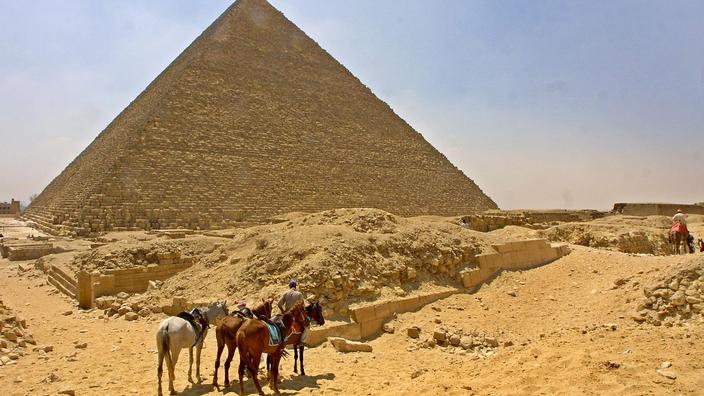It is the first of the Seven Wonders of the World and more than forty centuries after its erection, it continues to spark mystery.
More than 70 years after going missing, fragments of wood from the Great Pyramid of Giza in Egypt, almost 5,000 years old, were found by chance in a cigar box at the University of Aberdeen in Scotland, announced on Wednesday establishment.
Read also:
Cigars of the Pharaoh
, a rare edition of Tintin at auction
This discovery and its halo of secrets make us irresistibly think of the
Cigars of the Pharaoh
of Hergé because the fragment of cedar wood is one of the only three objects to have been found inside the pyramid in 1872 by the archaeologist. British Waynman Dixon.
Two of them, a ball and a bronze hook presumably used for construction, are kept in the British Museum, but all traces of the wood fragments had been lost.
Read also: Engineers and archaeologists scrutinize the Great Pyramid of Giza
In 2001, a lead had emerged: the piece of wood could have been donated to the University of Aberdeen (Scotland), but it could not be found.
Late last year, an Egyptian curatorial assistant reviewing the Asian collection, Abeer Eladany, came across a cigar box, emblazoned with the ancient Egyptian flag, before realizing that the piece of wood she contained was the lost artifact, now in several pieces.
“
When I looked at the numbers in the Egypt register, I immediately knew what it was,
” said the archaeologist.
Then Abeer Eladany made a point of clarifying: “
I have already worked on excavations in Egypt, but I never imagined that it would be here, in the north-east of Scotland, that I would find something so important. for the heritage of my own country.
"
A bequest to the University of Aberdeen
At the time of his discoveries in the 19th century, Dixon was with Dr James Grant, who had come to Egypt to fight cholera, with whom he had sympathized.
When Dr Grant died in 1895, his collection had been bequeathed to the University of Aberdeen, where he had studied.
In 1946, his daughter donated the cedar fragment to university, but it had not been listed and could not be found despite intense research.
Recent analyzes have made it possible to date the fragment of wood between 3341 BC and 3094 BC, or about 500 years before the construction of the pyramid.
They suggest that the objects found by Dixon, nicknamed the “
relics of Dixon
”, may have been left by the builders.
According to Neil Curtis, heads of museums and special collections at Aberdeen University, the results of this carbon dating represent a "
revelation
" that "will
certainly rekindle interest in Dixon's relics and how they can provide insight. lighting on the Great Pyramid
”.
The pyramid of Cheops as you've never seen it

